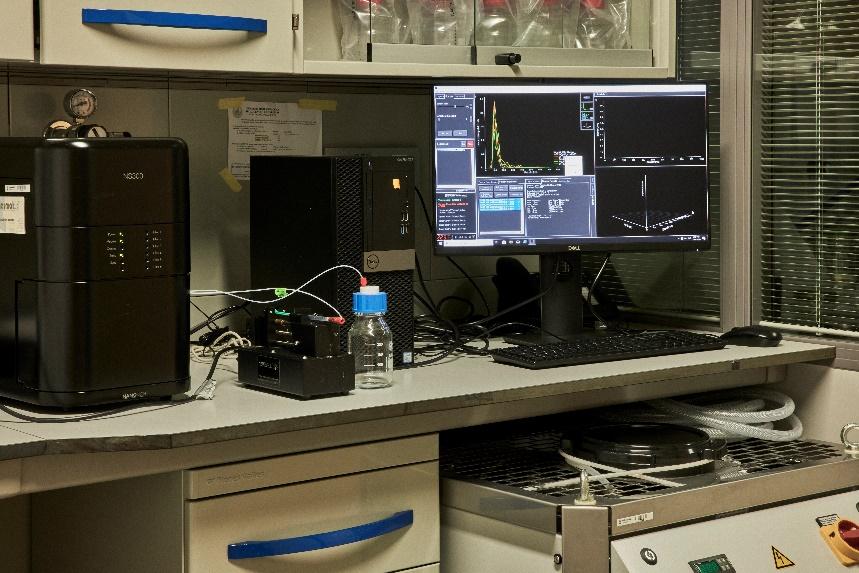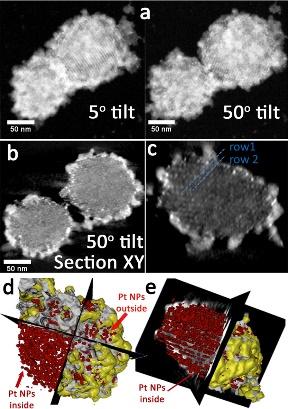U9-S05.
Generation and Control of Nanoparticle Aerosols
This Unit offers the possibility of generating nanoparticle aerosols from a large variety of liquid suspensions or nanosized powders. Our patented technology allows a reliable aerosol generation from any preformed micro or nanoparticle powder. These aerosols with known and reproducible characteristics can then be used in wide variety of applications.
For determining the particle size and concentration in aerosol phase, several nanoparticle aerosol spectrometers are also available. These allow a real-time determination of the concentration of particulate matter in air streams and environments from sizes down to 5 nm.
Also, the Unit is able to identify nanosize matter from aerosols using a reliable, ultrasensitive identification in diverse matrices, based in introducing trace amounts of labels (eg. rare earth oxides or flurorophores).
The following devices are available through this service:
- Liquid-phase aerosol generators.
- Nanoparticle aerosol generator from powder samples.
- Fluidized bed aerosol generator.
- Scanning Mobility Particle Sizer (Grimm Aerosol) for nanoparticle aerosols from 5 nm to 10 um.
- Optical Particle Sizer (Grimm Aerosol) for particulate aerosols from 1 um to 400 um.
- Environmental exposure chamber with controlled nanoparticle concentration.
Customer benefits
This service is able to produce stable and reliable aerosol streams with nanoparticles of a large variety of origins, e.g., on exposure tests with environmental models or for development and validation of methods for sampling and monitoring of airborne matter.
Target customer
Researchers with interests in environmental modelling, nanoparticle aerosol distribution, pharmaceutical companies for aerosolized drug formulations, development of clinical aerosol formulations, testing of respiratory devices and research in filtering units.
Additional information
SEM and TEM images of the matter captured from the powder aerosol generator
Selected References:
- Fast and simple assessment of surface contamination in operations involving nanomaterials. Clemente, A. et al. J. Hazard. Mater. 363, 358-365, (2019)
- A Versatile Generator of Nanoparticle Aerosols. A novel tool in Environmental and Occupational Exposure Assessment. Clemente, A., et al., Sci. Total Environ. 625, 978-986, (2018).
- Modelling the size distribution in a fluidized bed of nanopowder. Fabre, A. et al. Environ. Sci. Nano, 4 (3), 670-678 (2017).
Patents:
- Generador de aerosoles nanoparticulados y procedimiento de generación de aerosoles en continuo asociado a dicho generador J. Santamaria, F. Balas, M.P. Lobera, A. Clemente. Patent Appl. Number: PCT/ES2018/070027 Patent holder entity: University of Zaragoza, VITROCELL SYSTEMS GMBH
- Method for generating an inhalable micro-or nanoparticulate aerosol from a dry-powdered biocompatible material. J. Santamaria, M.P. Lobera, B. Arauzo, F. Balas, A. Clemente, Spanish Patent EP22382574.










